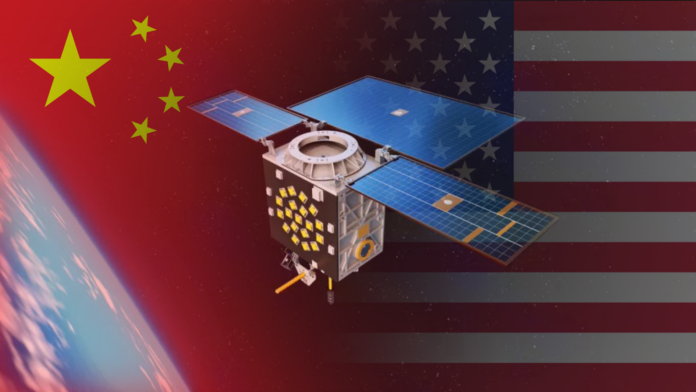For Dongfang Hour co-host Blaine, an American who has spent close to a decade living in China, the current state of US-China affairs is often hard to watch. Whatever your views are on the politics of the situation, on the individual issues that the two countries face, and on who might be right and wrong, it is hard to argue with the fact that the US and China seem to be getting further apart, that there is less common ground, and that these two countries that speak very different literal languages are also speaking increasingly difficult figurative languages too.
With that being said, despite this time of increasing friction between the two countries, there are still attempts to bridge the gap. In the space sector, despite sensitive technology, government contracts, and rockets, lots of rockets, there have been efforts on both the Chinese and the US side to increase understanding. One of Dongfang Hour’s first real experience with these efforts occurred in April 2019, when at the China Space Day Conference in Changsha, Blaine took part in a workshop discussing US/China space. On the Chinese side were such esteemed participants as China Great Wall Industry Corp, CASIC, and the Chinese Society of Astronautics, while on the US side there were a PhD from Cornell University, a representative from the Secure World Foundation, and a representative from the Caelus Foundation, as well as US diplomatic personnel in attendance. A followup workshop occurred on the sidelines of the IAC in Washington DC in October 2019, joined by Landspace, Ultimate Blue Nebula, and the Beijing Institute of Technology, as well as a handful of US commercial and government participants. Overall, the outcomes of these workshops were relatively open, optimistic dialogue.
The past several months have seen a significant undertaking by the SWF and Caelus to help further bridge the gap between China and the US in the space sector, this being the report Lost Without Translation: Identifying Gaps in U.S. Perceptions of the Chinese Commercial Space Sector. The report was an eye-opening one, the first of its kind, interviewing a variety of stakeholders from the US space ecosystem about their perceptions of China and its space ecosystem. The report was authored by people who had experienced the Chinese space sector firsthand, including one of the participants in the aforementioned Changsha workshop in 2019. With the authoring organizations also both being non-profits, the report provides a balanced and fair perspective on the current situation, with limited ulterior motives beyond trying to continue the peaceful and sustainable development of the commercial space sector.
On the Dongfang Hour, we got the chance to sit down with two of the report’s authors, Ian Christiansen of the SWF and Rob Ronci of the Caelus Foundation, to get some deeper perspectives on the report and their research more generally. During our hour-long conversation, we discussed report findings, areas for further research, and even a little bit of rampant speculation. Without wanting to give away too many details, here are some high-level takeaways from our conversation with SWF and Caelus:
- Information asymmetry. Put simply, the Chinese space industry is better-informed about the ongoings of the US than vice versa, by a fair margin. A lot of factors play into this–language barrier (a lot more Chinese people speak English than vice versa), cultural barrier (a lot more Chinese people have spent many years in the United States/the west than vice versa), and also probably human resources (it is relatively less expensive to hire lots of Chinese people to translate and publish information about western activities than vice versa). There is also clearly a large element of “the US is leading in space”, and therefore of course everyone covers US companies. The same is very likely true of Europe and the US–that is, Europeans are better-informed of American space activities than vice-versa, all else equal. One could also argue that there is a certain “US-centric worldview” in the US. This is not yet the case in China, but we would argue as China gets bigger and more powerful, and also more nationalistic, Chinese people may start to take a more “China-centric worldview” too. Should be interesting to watch.
- Competition is not the same in all sectors. Namely, despite the fact that there are approximately 25,000 Chinese commercial launch companies (really there are like 25, which is still a lot), the biggest competition today is in the geospatial imaging sector. With China having launched dozens of state-owned EO satellites (Gaofen) over the past several years, and with commercial companies such as CGSTL having launched a couple dozen smaller, but still significant satellites in the past 2-3 years, the competition appears to be coming from multiple sources. Back to the launch point, launch companies definitely get the most attention today, and presumably the reason they are not as competitive is because, frankly speaking, most of China’s 25,000 launch companies are not currently in operational phase, that is, they are still developing launch vehicles. That said, if EO is any indication, we should expect to see Chinese launchers scouring the earth looking for business in the coming years (or indeed, now).
- There is willingness, and indeed encouragement, by US companies to compete with Chinese companies, but under well-defined terms. Whether well-defined terms means “US-led trading systems like the WTO” is not entirely clear, but at any rate, there is the belief on the US side that if this is a “fair fight”, the US companies stand a good chance of out-competing the Chinese companies, at least in some dimensions. There is probably some truth to this–we feel comfortable saying that the US economic system is, all else equal, more conducive to that oft-chided term “disruptive innovation”, simply because the incentive structures are more open and allow for more experimentation with less government interference. As such, US companies may be right in saying that they have a sustainable advantage vis-a-vis Chinese companies provided that there are systems in place to protect their innovation/IP. In general, it makes me (Blaine) a little bit happy and proud as someone from the US to see US companies basically saying “bring it on….on fair terms”. We will see how it goes.
Overall, a great interview full of insightful points from our two guests. Moving forward, it seems unlikely that the US-China situation will improve markedly in the short-term. That said, the beauty of the space sector is that there is so much growth, we are in such an early stage, and the industry is already so international that in theory, we might see some norms and standards that allow for greater collaboration between the two countries, at least among commercial companies. Time will tell, but the first step seems to be to improve communication and understanding between the two sides. In this way, a useful first step could be for more US-based listeners to check out the Dongfang Hour, an objective and holistic source for China space industry analysis!



